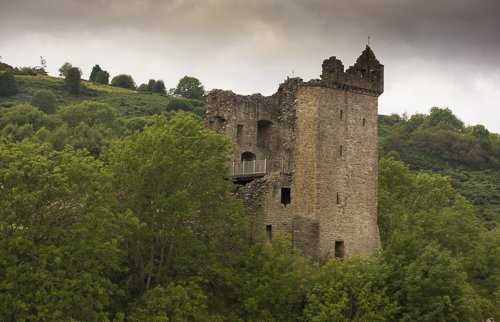Fort Augustus was originally a military settlement built in the wake of the Battle of Culloden but one that developed in the first half of the 19th century to service the Caledonian Canal and its flight of locks, here descending towards the shores of Loch Ness. Our overnight mooring was beside an impressive 19th-century building that incorporated the remains of the original fort into a private Catholic school for boys that survived until the end of the 20th century. Today it is a high-end resort complex with the fort serving as the gym. It was touch and go whether we would sail at all this morning.
We began our day sailing across Loch Ness, the largest body of fresh water in Britain, deeper than the North Sea. We had fine views of Urquart Castle, a strategic location at mid loch that has changed hands many times over the centuries. The ruins of a large Norman castle with it keep and bailey were clearly visible. It was here, according to his first biographer, that St Columba performed remarkable miracle by bidding a monster in the loch to descend to its depths when it threatened to impede his passage on mission to convert the Picts of eastern Scotland. On arriving in Inverness, Columba succeeded in converting King Brude of the Picts by explaining that Christ was his druid. We had arrived at Muirtown Basin in Inverness in time for lunch within sight of the sea lock at Clachnaharry, having completed our transit from the Atlantic to the North Sea.
In the afternoon we toured the award-winning visitor centre at Culloden, the site of the final Jacobite defeat in 1746. Following Culloden, the forces of the Crown determined to rid Scotland of treacherous Catholic Gaels. The Gaelic language and clan system were proscribed, the playing of the bagpipes outlawed, and wholesale forcible eviction and emigration, largely to the Canadian Maritime provinces ensued, a process known as the Highland Clearances, in which an uneconomic people were replaced with more profitable sheep. Later, we also visited the Clava Cairns, a late Neolithic/early Bronze Age site consisting of chambered burial cairns and megalithic stone circles before returning to the ship for a festive Scottish Farewell Dinner, with haggis and bagpipes, followed by a presentation of Highland Dancing in the lounge by local schoolchildren from Inverness.









